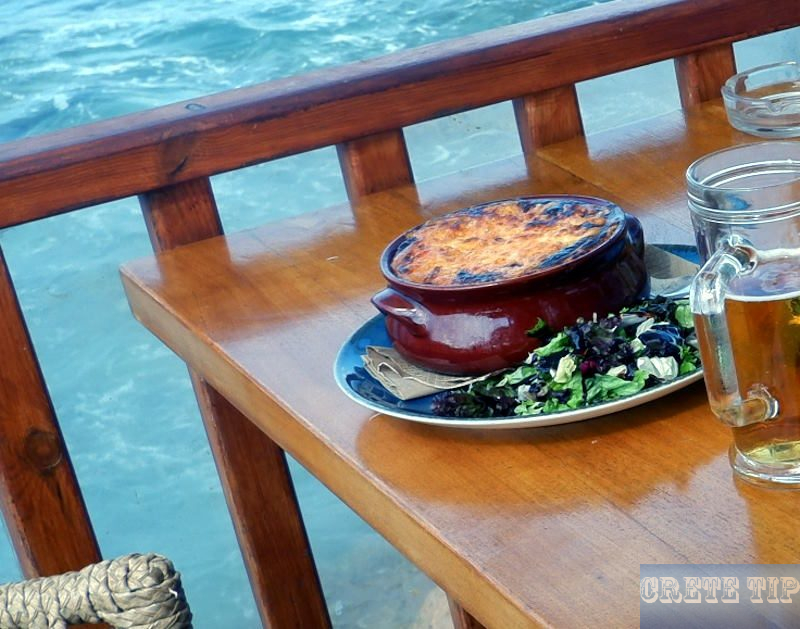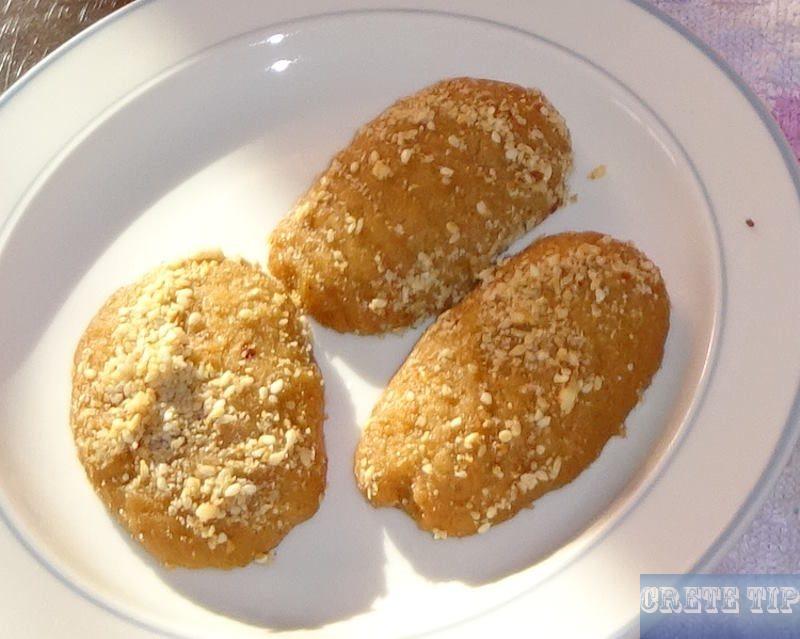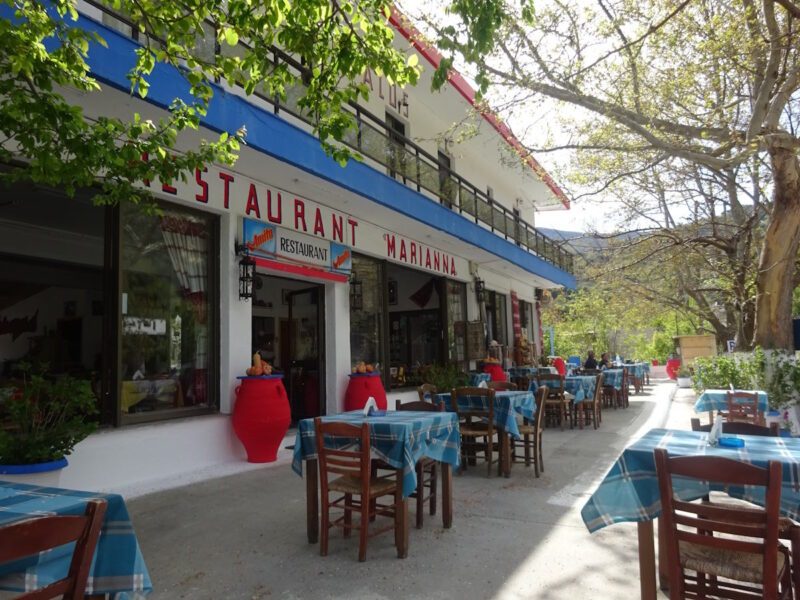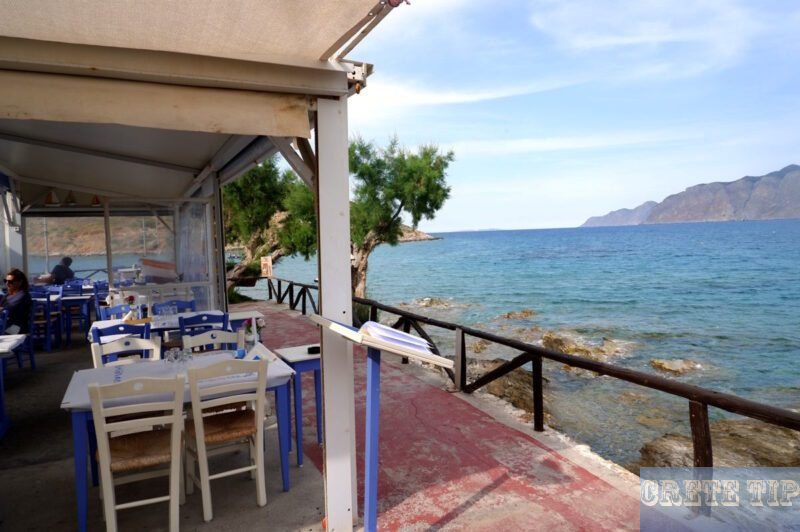Eating and drinking in Crete.
Cretan cuisine is an independent type of Greek food and drink. Like everything in Crete, the cuisine is simple but delicious and above all healthy.
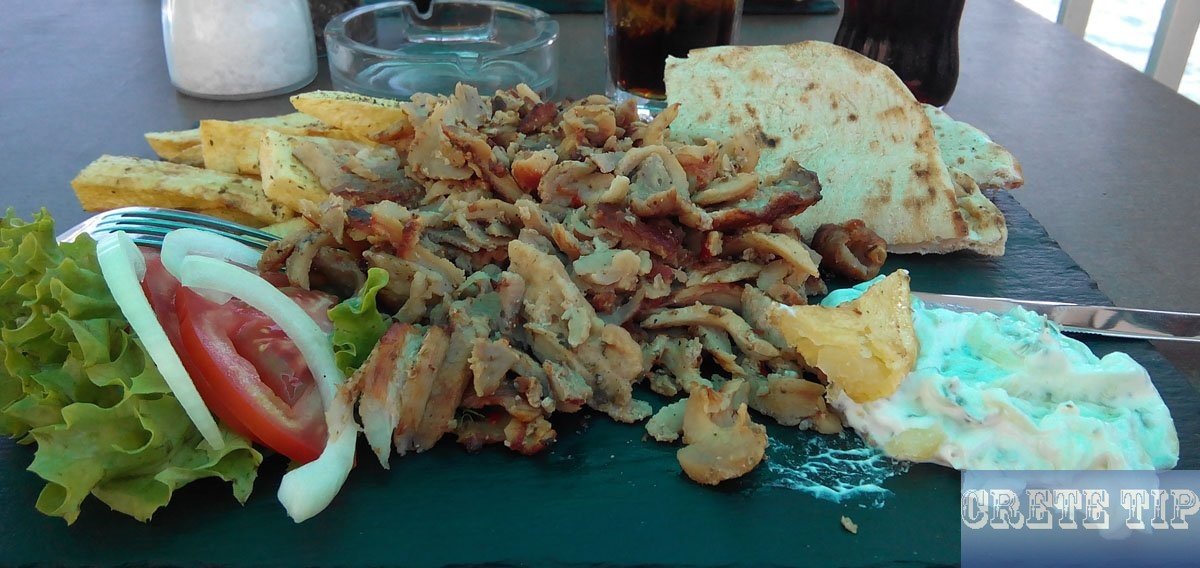
Eating and drinking in Crete
Regional specialties can be found on Crete and the quality and selection of the products produced on the island by different, smaller producers provides for various palate pleasures.
One of the highlights of the trip through Crete is to stop at a family run tavern where you can enjoy authentic Cretan cuisine and the dishes are prepared with fresh, home-harvested products, where you can smell the wild aromatic smells of the herbs collected in the mountains, the oil and cheese homemade, the tender lamb meat from a local shepherd or the fish caught by the host himself.
Cooking and Eating of Cretan and Greek dishes:
Dining offers on Crete
Unfortunately, since the arriving of mass tourism in many tourist taverns, the food served to the guests hardly corresponds to this Cretan cuisine. But this has changed since the Cretans are proud again to present their traditional cuisine to guests from abroad.
Even in busy tourist centers, many taverns have stopped serving foreign tastes by serving ‘schnitzel’ as ‘stifado’, while a new generation of qualified chefs presents traditional dishes with different variations and flavours.

Crete is not exactly a gourmet destination, as the food there comes from a very rustic cuisine, whose simple, seasonal and balanced preparation reflects the abundance of a sun-drenched, fertile country and its ingenuity, which has its origins from the difficult times of great scarcity.
Cretan cuisine has become legendary for its health benefits after scientific studies in the 1960s showed that Cretans had the lowest rates of heart disease or other chronic diseases. This is mainly due to a proportionately higher diet of pulses, fresh vegetables and fruit instead of meat or other processed foods, as well as the abundant use of olive oil.

The food and the ritual of eating together play an important role in the life of Cretans, whether at home or in restaurants with family and friends. Cretans travel quite far to visit a great restaurant or to get certain dishes. They raise the mountains for local meat or visit the coast for fresh fish. That’s why some of the best taverns are hidden in the most inconspicuous places.
Cretan cuisine
Greek and Cretan dishes often overlap, but there are also Cretan specialties, as well as regional differences spread all over the island.
Cretan cuisine has its roots in ancient times and has been influenced by different cultures over time, but is still essentially based on fresh and unadulterated seasonal products, aromatic herbs and ingredients that speak for themselves.
Olive oil, which is produced in large quantities all over the island, is one of the best of its kind in the whole world and is an essential component of meals. Besides its beneficial properties, olive oil also makes vegetables and salads taste better.
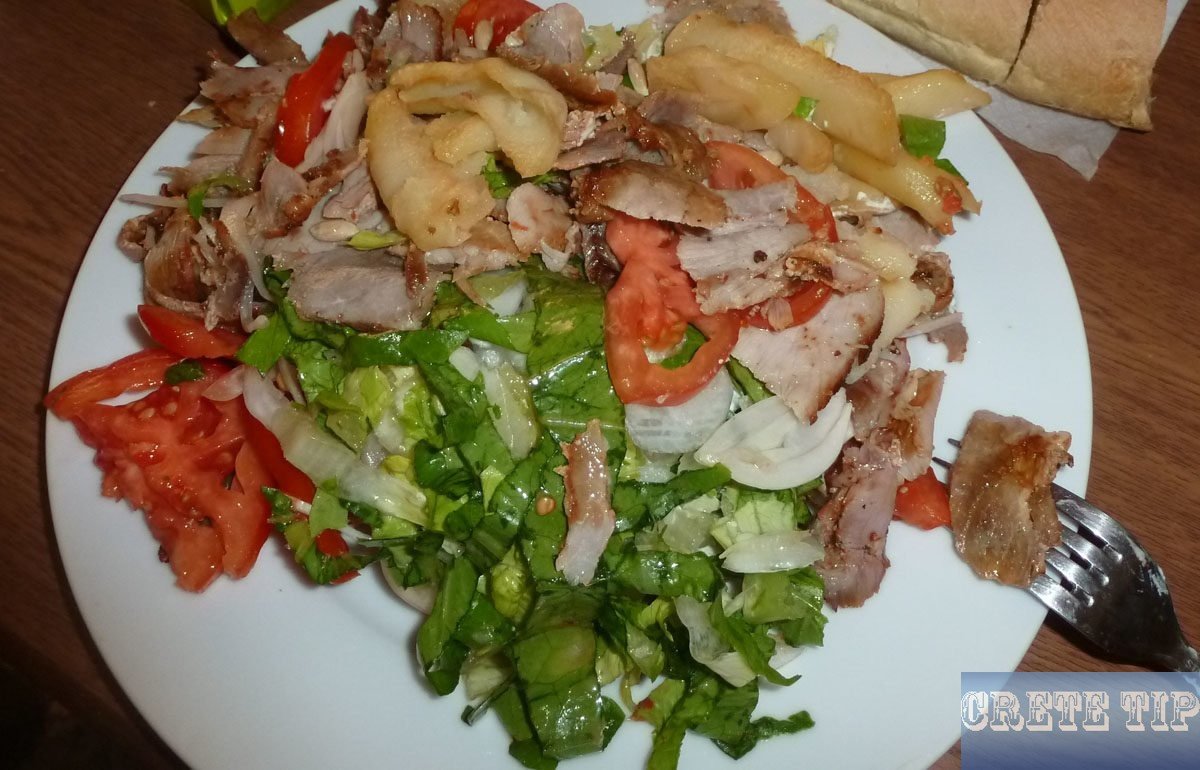
The diet on the island developed out of subsistence minimum and what could be cultivated or locally produced. For centuries Cretans have collected horta – wild vegetables – in the hills and cook them for warm salads or use them in cakes and stews.
Hohlii – snails – are collected after the rain and prepared in dozens of different ways. You can try Hohlii Boubouristi, where the snails are cooked in vinegar and rosemary, or Hondrus with broken wheat.
Cretan paximada – rusk -, a remnant from the times of famine, is made from barley flour or whole wheat and baked twice to obtain a hard loaf that can be stored for practically years. The rusk is moistened with water and served with tomatoes, olive oil and feta or mycithra – a sheep’s cheese – in the popular dish Dakos or Koukouvagia.
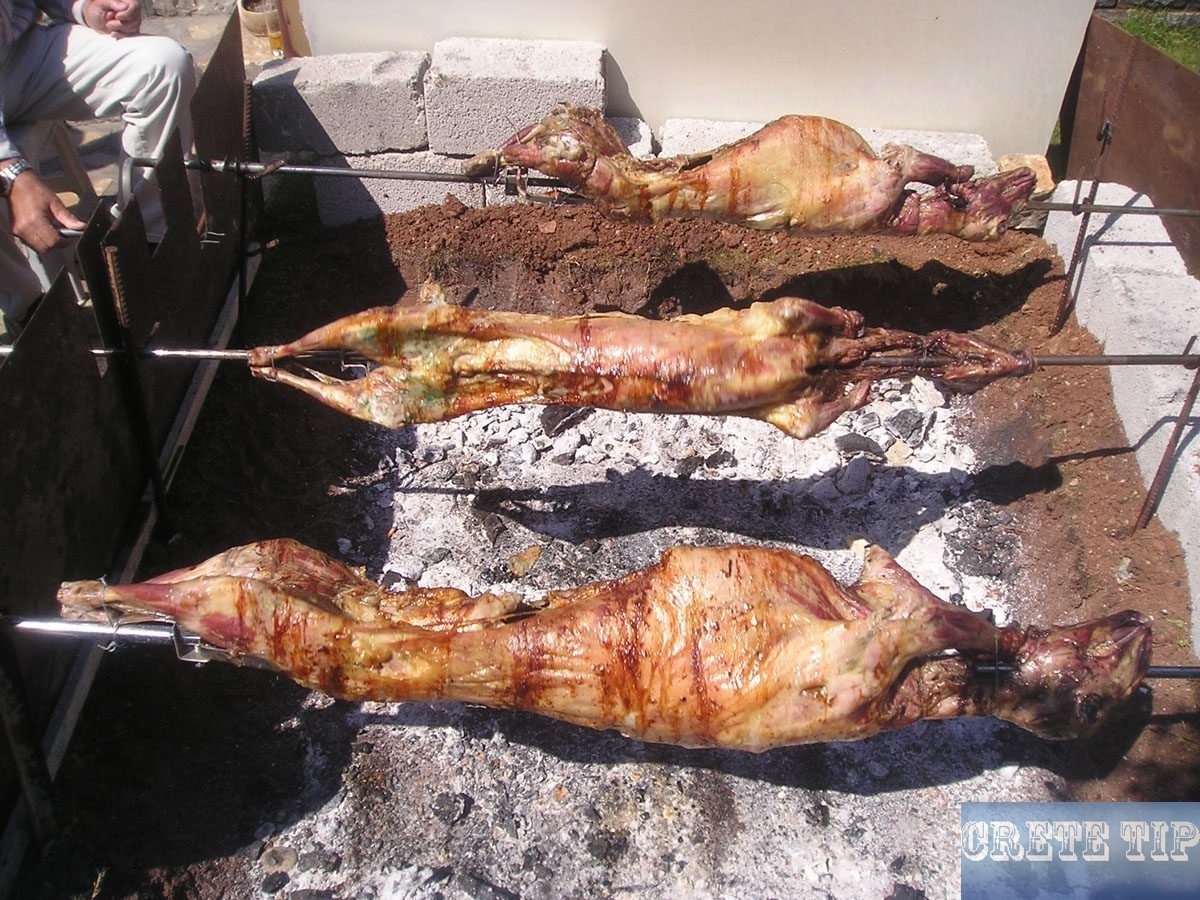
Meat is eaten more regularly than in the past. Cretans eat a lot of lamb and goat as well as rabbit, which is prepared with rosemary and rizmarato vinegar. While grilled dishes dominate the tavern menus, Cretans have their own way of grilling, which is called Ofto. Large chunks of meat are grilled upright on hot coals. In parts of Crete, however, meat is also briefly fried as tsigariasto, while in traditional mountain taverns you will also find surprisingly delicious, cooked mutton or goat meat.
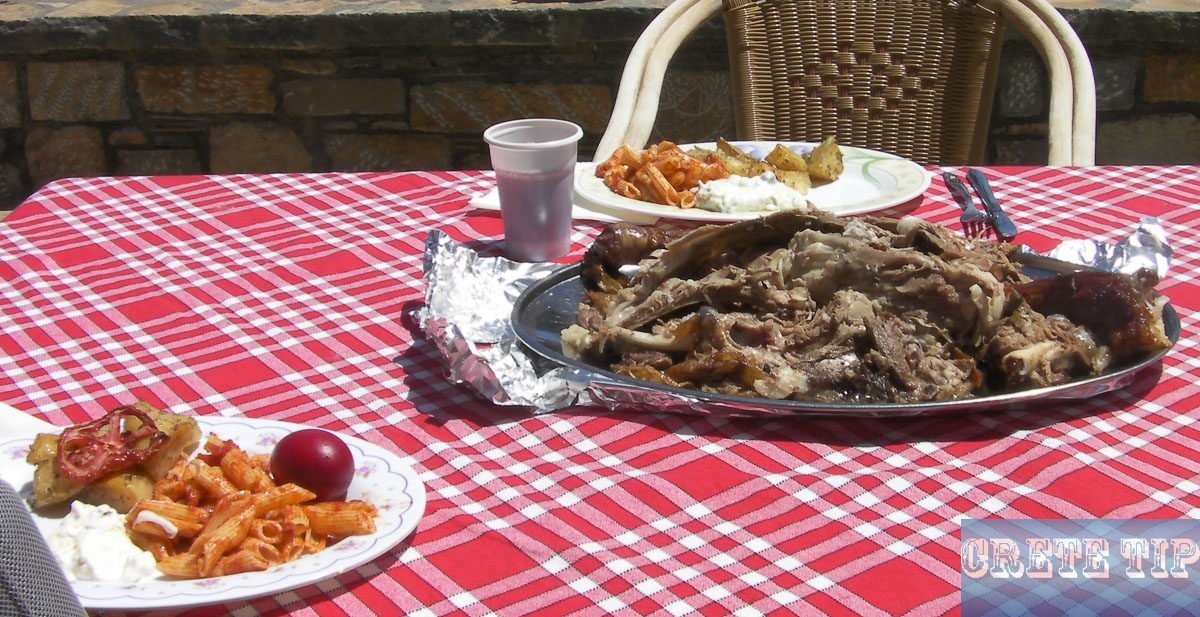
Meat is also cooked together with vegetables, often lamb is steamed together with stein agathi – wild greens – or artichokes and chicken with okra.
The all-purpose Cretans use practically every part of the animal, including delicacies such as ameletita (the ‘unspeakable’ – fried sheep’s testicles) and gardhoumia (stomach and innards in the intestines).
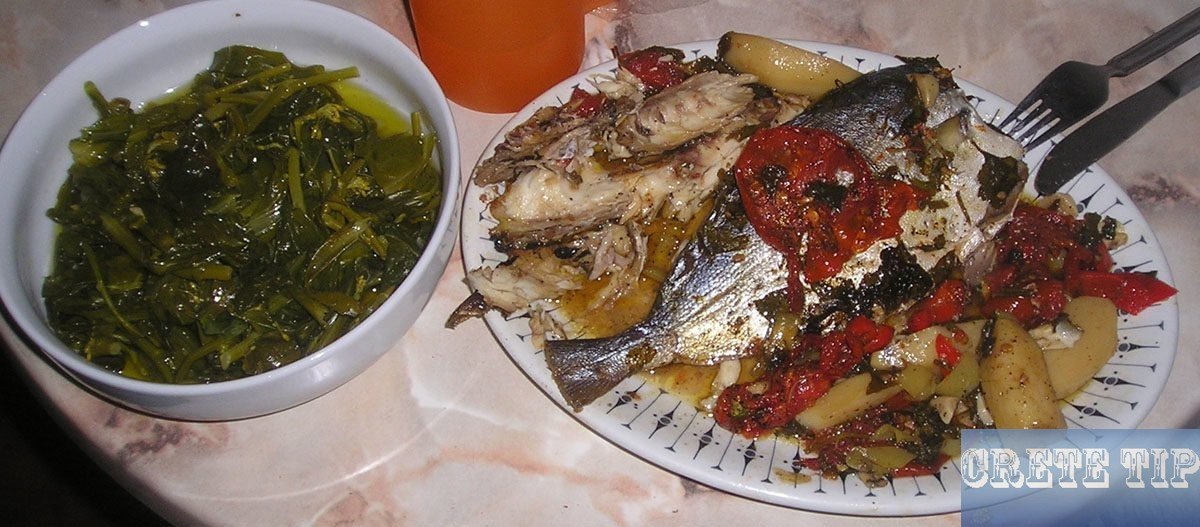
Except for the mountainous areas further inland, Psari – the fish – has long been a staple food cooked with minimal effort. Usually the fish is grilled whole and drizzled with Ladholemono – a lemon-oil-sauce. Smaller fish such as red mullets and others are usually lightly fried.
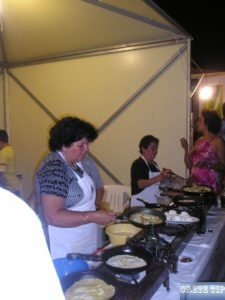
Kalitsounia is a lightly fried pastry filled with Myzithra cheese or Horta. Cheeses are also served with honey.
Where the Cretan cuisine shines, vegetable dishes such as artichokes and thick beans or tasty courgette flowers Anthoi, filled with rice and herbs.
In Crete, wonderful cheeses are made from goat’s and sheep’s milk or a combination of both. Graviera, a nutty, mild, grey-brown sheep’s cheese, is often matured in special mountain caves and stone huts called Mitata. It is delicious when eaten with thyme honey. Other local cheeses are Myzithra (a soft, mild ricotta-like cheese that can be eaten soft or grated), the hardened sour Xynomyzithra, Anthotyro (a similar soft whey cheese) and Galomyzithra (a creamy specialty from Chania). Staka is a rich, soft butter cheese that is often added to rice pilafi (pilaf) to make it creamier.
Thick, tangy sheep’s milk yogurt is something to enjoy, and we eat best with honey, walnuts or fruits, especially in areas like Vryses.
Cretan Drinks
A legacy of Ottoman rule, Greek coffee is traditionally brewed on hot sand in a special copper briki (pot) and served in small cups where it sinks to the bottom – which should not be drunk. It is drunk as glyco (sweet), metrio (medium) and sketo (without sugar).
However, traditional Greek coffee is displaced from its place as a national drink by the ubiquitous frappe, the ice-cold instant coffee drink that you can see everyone drinking. Alternatives are espresso and cappuccino, refrigerated as Freddo.
Herbal teas are popular, especially camomile or aromatic Cretan Tsai Tou Vounou (mountain tea), which is both nutritious and delicious. Endemic dictamo tea is known for its medicinal effects, while Crete is supposedly ‘medical’ hot drink for colds and other cases rakomelo – from raki, honey and cloves.
Beers and spirits
Greek beers can be found among the offers, but they are dominated by major European brands, especially breweries such as Amstel or Heineken. The most important Greek brands are Mythos and Alfa, while the boutique beers include Vergina and Hillas from northern Greece. In addition, organic Piraiki, made in Piraeus and Craft, which is widely available as a potion.
Crete also has its own beer, which is produced in the brewery Rethymniaki.
However, Greeks are not big beer drinkers and consume only about half the EU average per capita. Supermarkets are the cheapest place to buy beer, which is also available in kiosks.
Ouzo, the famous Greek spirit, has only limited popularity in Crete and is mostly drunk by Greeks from the mainland or foreigners. Serve well with ice and a separate glass of water to dilute, making the ouzo milky-white.

Wines
Wine has been produced in Crete since Minoan times and Cretan farmers have long ago planted vineyards and produced wine for their own consumption. It was only industrialization and the resulting rapid urban growth with the start of tourism that led to the mass production of bottled wine and Retsina becoming known throughout the world.
In the last 20 years there has been a renaissance in the Greek wine industry, when a new generation of progressive, internationally trained winemakers reinvented Greek wine from local and international varieties.
About 20 percent of all Greek wine is produced in Crete. Even if the Cretan wine does not bring the connoisseur into ecstasy, many exquisite wines are produced on the island.
A kind of wine tourism is slowly developing, as the wineries are offered more friendly to visitors and also several sightseeing tours.
About 70 percent of Cretan wine comes from the region of Peza, Crete’s most important region and wine designation of origin. Many of them are mixed and produced in large quantities by cooperatives and the quality can vary. Other important wine-growing areas are Dafnes, Archanes and Sitia, which have important productions and there are also fine wineries near Chania.
The most popular Cretan white grape varieties are Vilana and Thrapsathiri. The oldest variety, Liatiko, has been used for the production of red wine for 4,000 years, with red wines including kotsifali and mandilari.
House wines served in restaurants are usually very representative and much cheaper than bottled wine. Some Cretan house red wines have a light port taste. Ask for Kokkino (red), Roze (pink) or Lefko (white).
Nowadays, Retsina, a white wine flavored with the resin of pine trees, has an almost folkloric significance among tourists, some of whom confuse it with cask wine. It goes well with highly flavored foods, especially seafood, but it is an added flavor.









